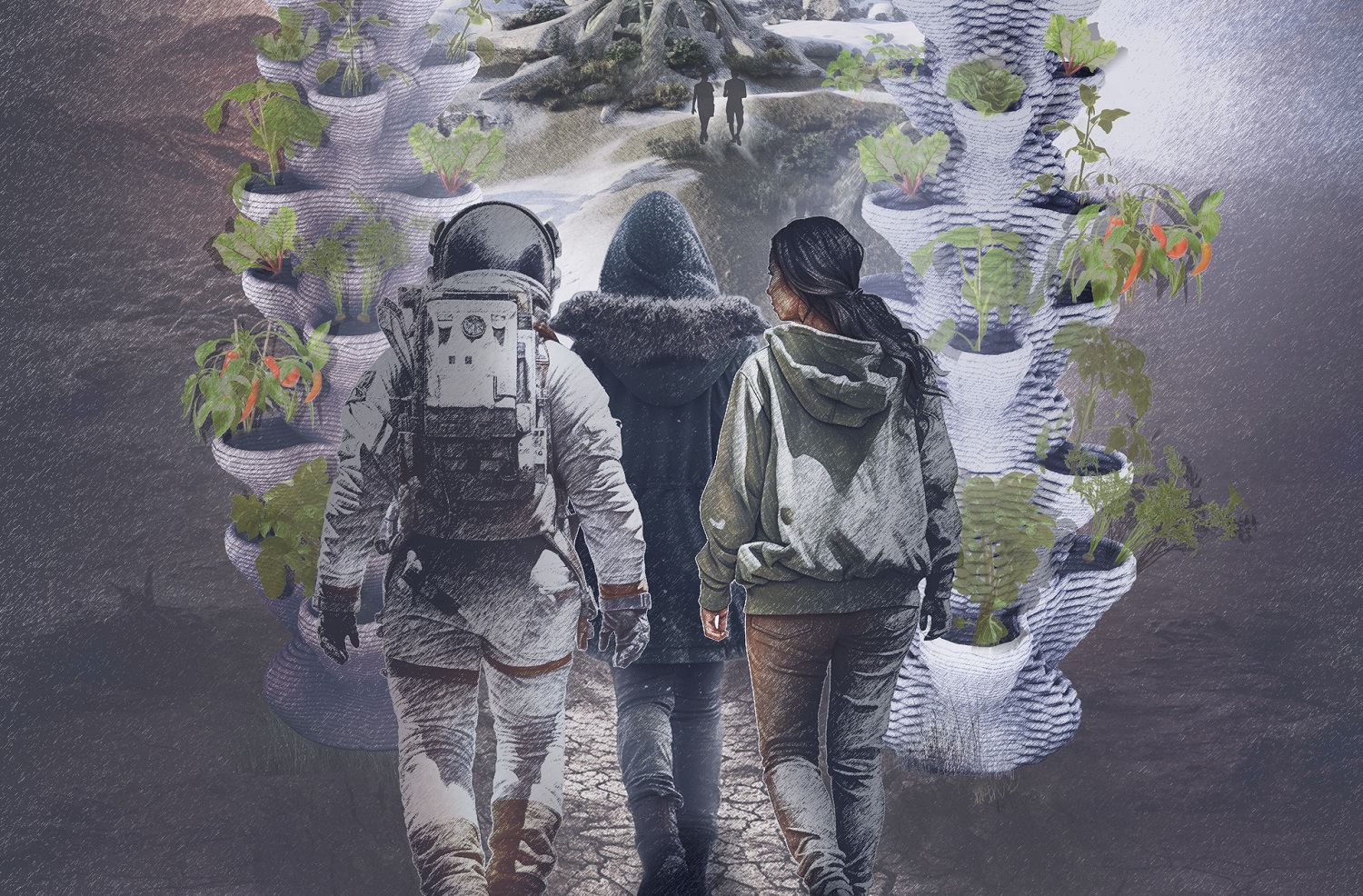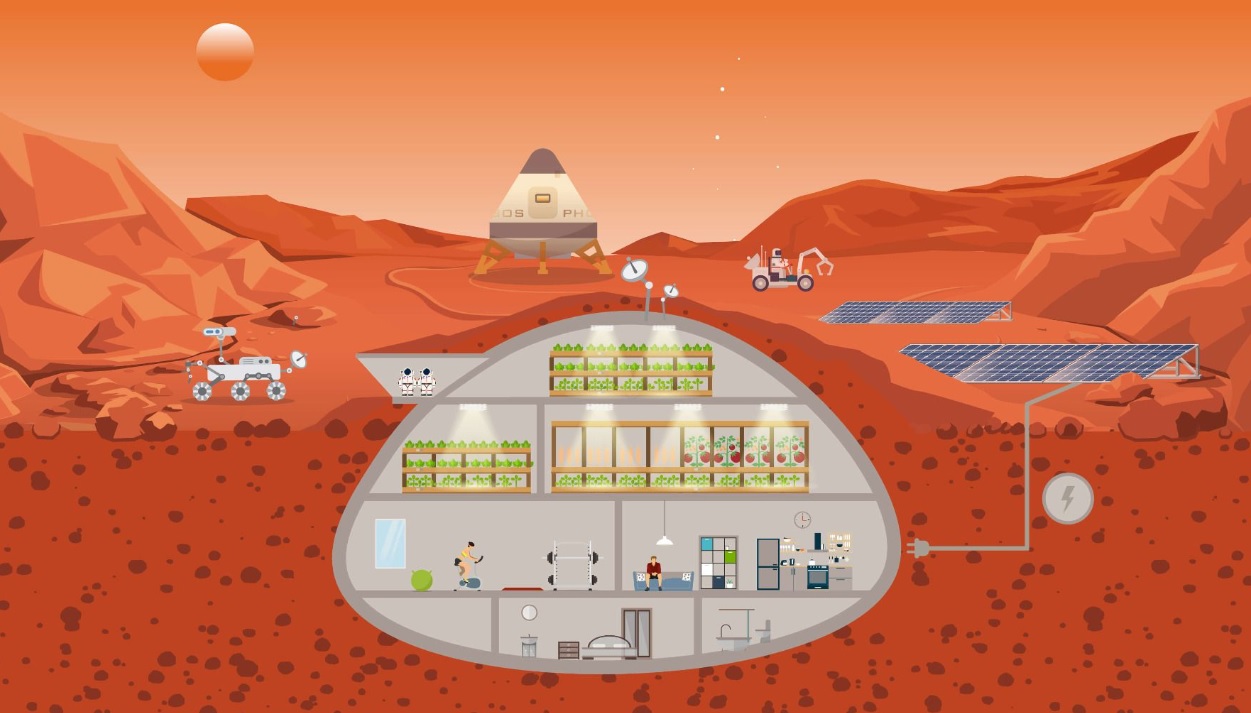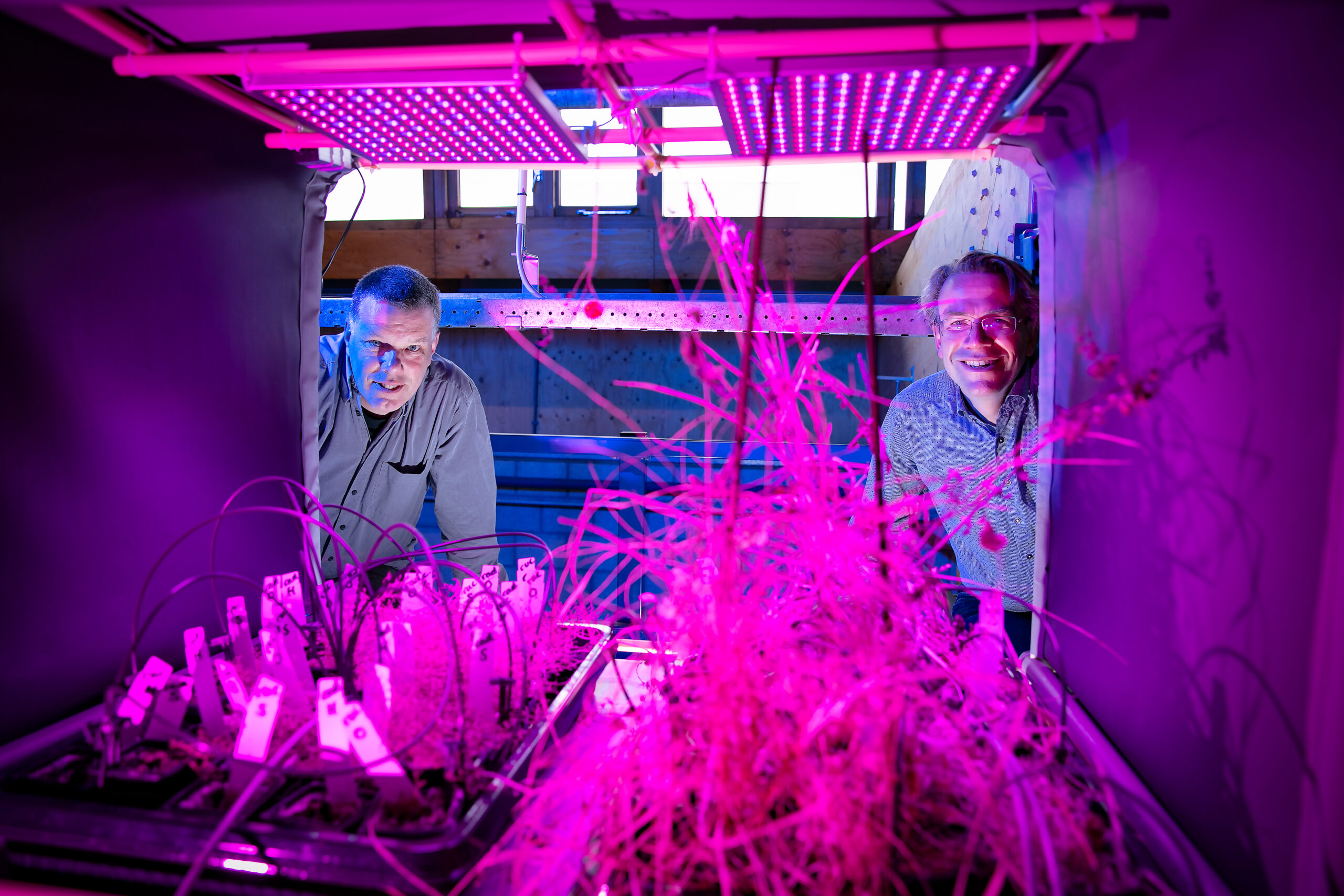Crops grow better through mixed cultivation than when surrounded by the same plants. The modern version of this age-old wisdom is called strip-tilling. With a new experiment, exobiologist Wieger Wamelink and master’s student Rebeca Gonçalves show the same applies on Martian soil.
At least, it would appear to be so. On Wednesday, a group of volunteers harvested the carrots, peas and tomatoes. Sixty pots with plants. In each pot, a plant of every type, and, for the purpose of comparison, some pots with three the same plants. Eco-culture versus monoculture. And all this, in three different soil types: Martian soil, sandy soil, and potting soil.
Providing services
The similarities with strip-tilling are apparent. ‘With the difference that in this experiment, the roots are completely intertwined. This enables the plants to benefit optimally from one another’, Wamelink explains. ‘In theory, plants provide each other with services. They may protect each other from disease or provide each other with nutrients. And that leads to an increased yield.’
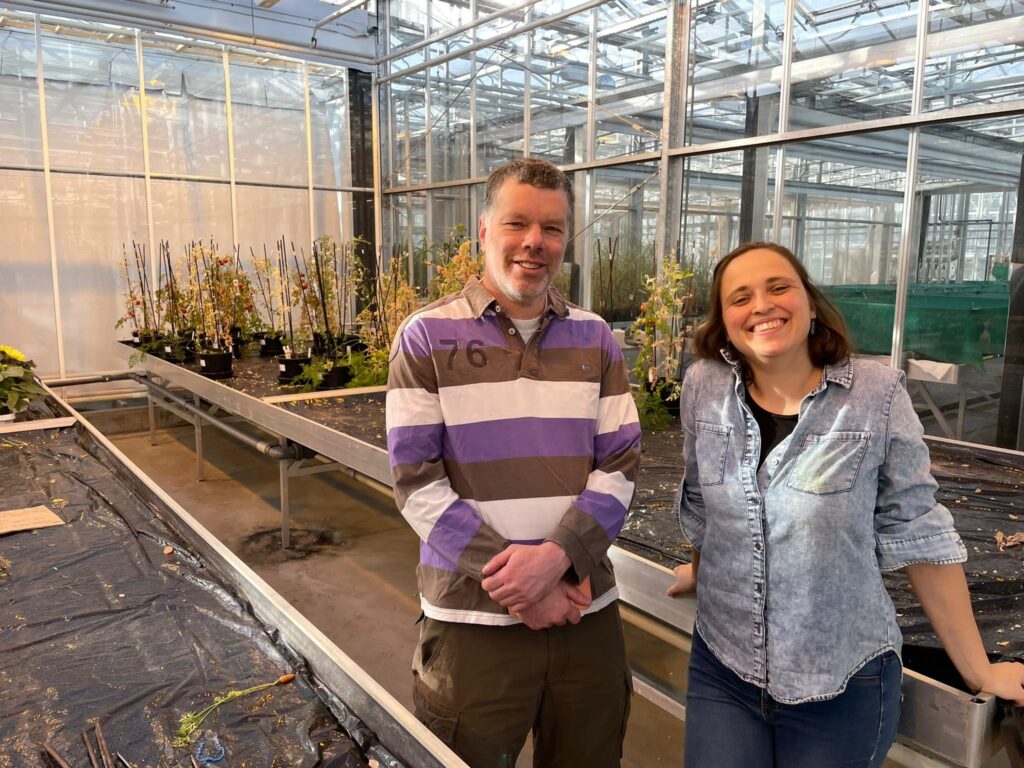
Wamelink’s study on Martian soil is a unique opportunity for Rebeca Gonçalves. She is working on building an astrobiological profile within her biology programme. ‘I took a minor in astronomy in Groningen, am now doing this Mars-thesis and intend to do my internship at ESA (European Space Agency, ed.) in Noordwijk with the department that focuses on commercialisation and innovation in space exploration.’
Stikstofbinding
A specific service within this experiment is nitrogen fixation. ‘We inoculated the soil in which the peas grow with rhizobium bacteria’, Wamelink explains. ‘These bacteria will enter the roots and form buds, in which they convert nitrogen into a form that the plant can use. This enriches the soil.’
‘The bacteria must be introduced into the soil first,’ Wamelink continues. ‘Martian soil is dead soil. The peas thus help the other plants grow. A more diverse soil life emerges, stimulating growth and increasing resilience against diseases.’And, it works. ‘The Martian soil and the sandy soil show a higher yield, which is important on Mars in particular.’
I truly believe that space research unifies us as a planet
Rebeca Goncalves, master’s student Biology
The tomatoes are nicely rounded and red. Ripe for eating. But they are rather small. ‘Correct’, says Wamelink. ‘We opted for Tiny Tom, a variety that produces small tomatoes. Otherwise, the plants rapidly grow against the greenhouse ceiling and must be trimmed constantly, which is quite a job with sixty plants. That is also why we did not use any moon soil this time.’
Exploring
‘Exploring is in human nature’, Gonçalves explains her motivation. ‘Otherwise, we would still be living in Africa. Space is simply the next frontier we will cross. I am also well-travelled, and I share the explorative mind and the feeling I am a citizen of Earth rather than of a single country. I truly believe that space research unifies us as a planet.’
For now, however, her feet remain firmly planted in the soil to harvest carrots, peas and tomatoes, weigh the stems and take glamour photographs for publicity purposes.

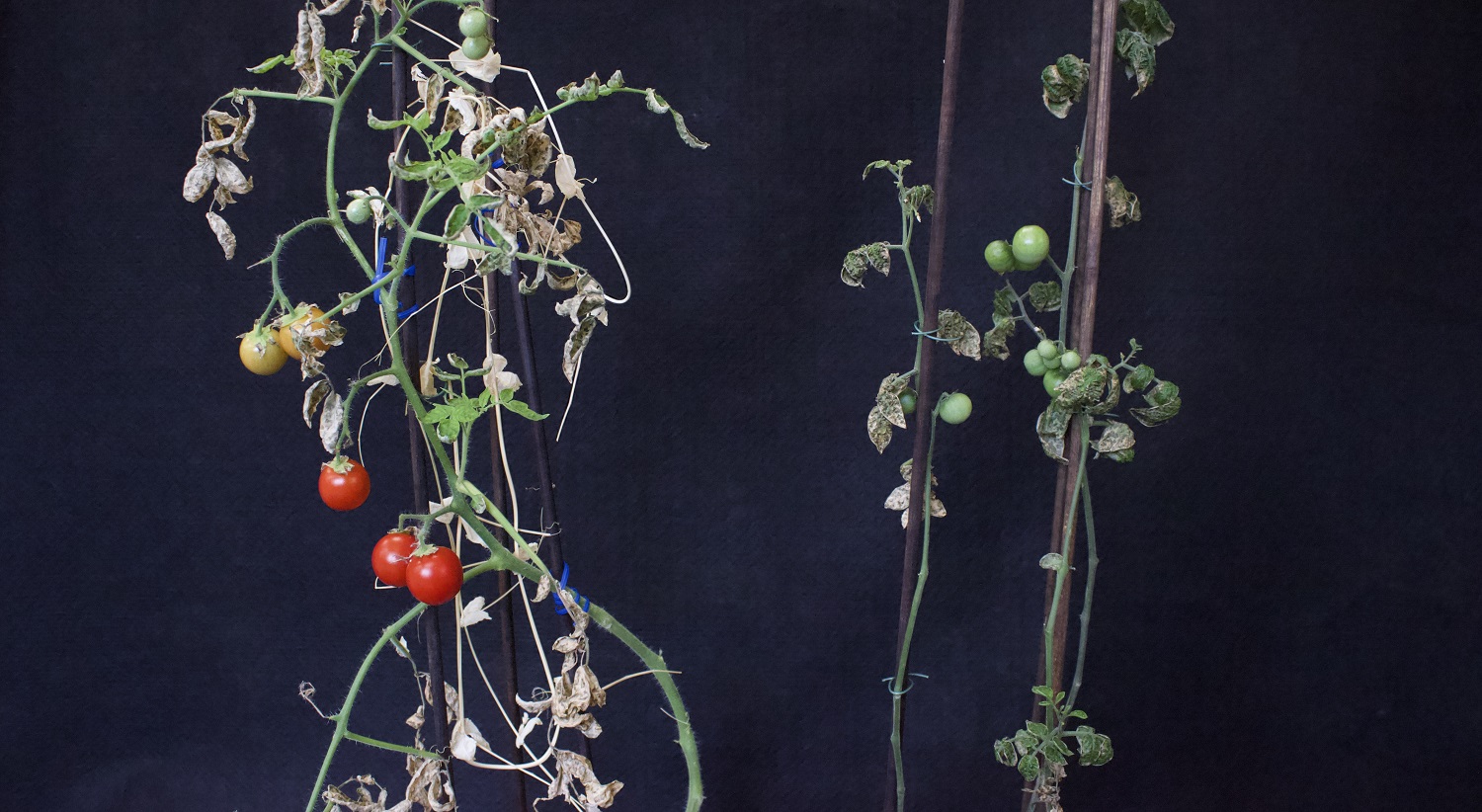 Tomatoes in the company of peas and carrots (left) do better than in isolation (right). Photo Rebeca Goncalves
Tomatoes in the company of peas and carrots (left) do better than in isolation (right). Photo Rebeca Goncalves 